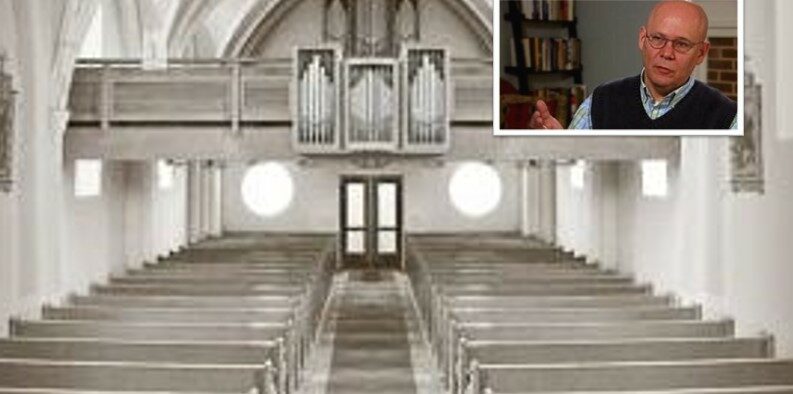The Decline of the Mainline Continues
But Non-Denoms and Anglicans Are On The Rise

Editor’s Note: Most Saturdays we will feature this “Editor’s Notebook” column. MinistryWatch President Warren Smith will comment on one or more stories in the week’s news, adding an additional perspective or, sometimes, a behind-the-scenes look at how the story came to be.
A new study by demographer Ryan Burge got a lot of attention on the MinistryWatch website this week. 
Burge took a deep dive into membership numbers for nine Protestant denominations, going back 30 or so years. He included both “mainline” denominations and newer, more evangelical denominations. He found that most Protestant denominations in this country are losing members, and even those that are growing are mostly not keeping pace with the population growth of the country.
One of the key findings is that the decline of the mainline churches is even worse than has been previously reported. The Evangelical Lutheran Church in America (ELCA) is down 41 percent from the early 80s. The United Church of Christ is less than half the size it was in the 1980s. The United Methodist Church (UMC) is down 31 percent. The picture for the UMC is likely to get much worse. Over 15 percent of its churches are disaffiliating just this year, and that includes many of its largest churches. Burge wrote, “I wouldn’t be surprised if membership is down 40 percent or more by this time next year.”
The SBC is down just 4 percent from the early 80s, but that’s because it grew through the 80s and 90s. If you look at just the past 10 years, the declines have been more precipitous.
Even the denominations that are growing are not unalloyed success stories.
The Assemblies of God has grown by over 50 percent in the 35 years, but – as with the SBC – most of that growth came in the 80s and 90s. Today, the AoG’s membership is mostly flat, growing at just a percentage point or two a year. Likewise the Presbyterian Church in America (PCA). The PCA has doubled in size since the 80s, but it’s important to remember that the PCA has only about 400,000 members, and its growth has flattened out almost to zero.
Access to MinistryWatch content is free. However, we hope you will support our work with your prayers and financial gifts. To make a donation, click here.
The Rest of the Story
Burge’s work is important and helpful, but it doesn’t tell the whole story. It’s impossible, for example, to track reliably the growth of independent, non-denominational churches, but they have exploded in number and size since the 1980s. It’s likely that many people leaving denominations are not, in fact, leaving the church. They are simply going to these non-denominational churches. Depending on the church you’re leaving, that could be a positive development.
Another aspect of this story that is not accounted for by Burge’s data is the growth of the Anglican Church in North America (ACNA). ACNA is less than 20 years old, and has grown from zero to more than 1000 congregations and more than 120,000 members. That means that over the past decade ACNA has grown faster than any of the nine denominations analyzed by Burge.
Also, ACNA, though small, “punches above its weight,” with many evangelical writers, musicians, and ministry leaders now calling ACNA home. (Including me: you can read about my journey into ACNA here.)
All of this is why I’m not discouraged by the numbers in Burge’s study. Theologically liberal and heterodox churches are dying. From my point of view, that’s not a bad thing. They are merely reaping what they have sown for generations. Theologically conservative churches are holding their own, and in some cases thriving. That’s a good thing.
So when we look at statistics about the church, it’s good to keep in mind the words of Mark Twain: “News of my death have been grossly exaggerated.
But it’s even better to keep in mind the words of Jesus, who said of the church, “The gates of hell will not prevail against it.”



